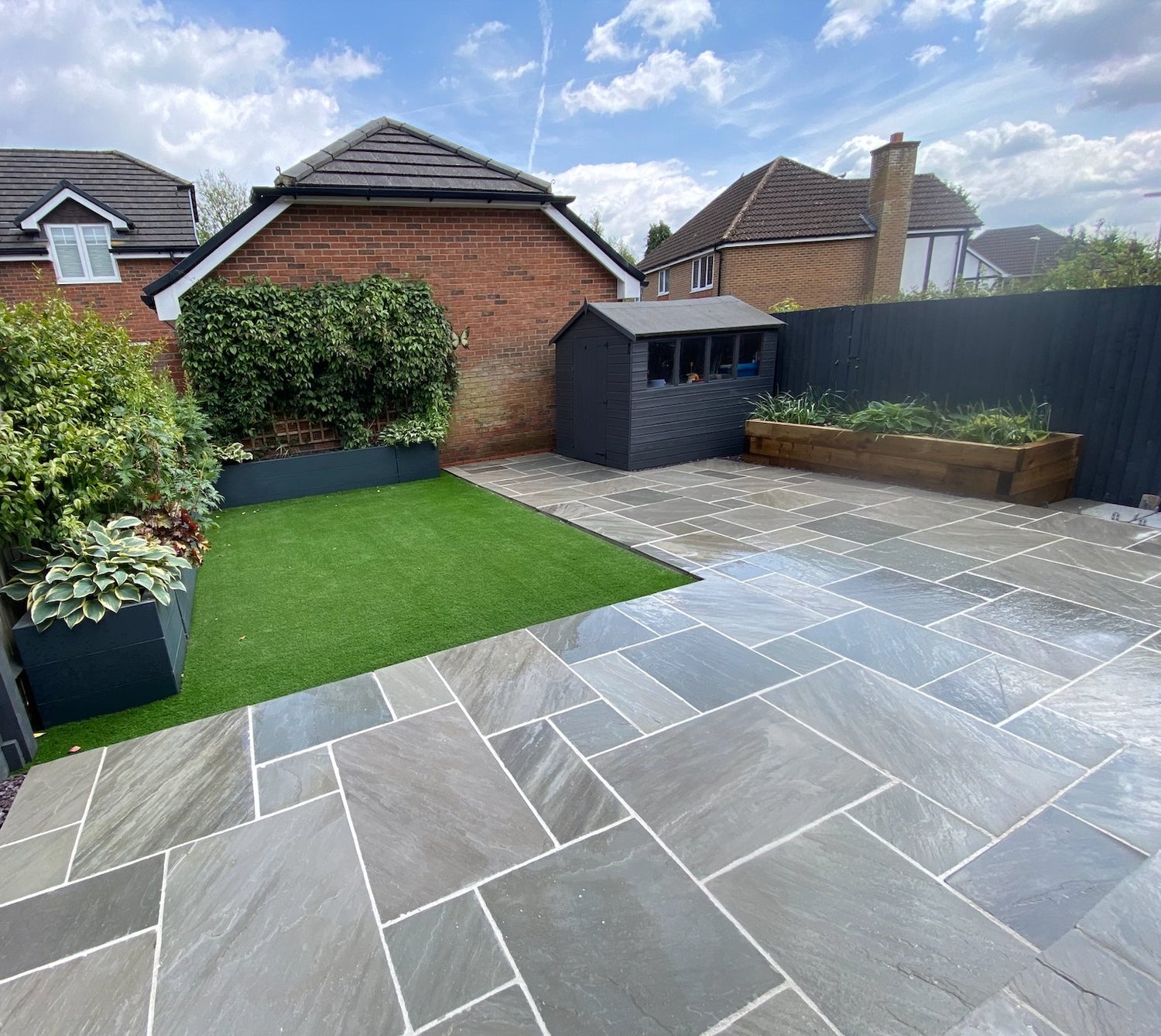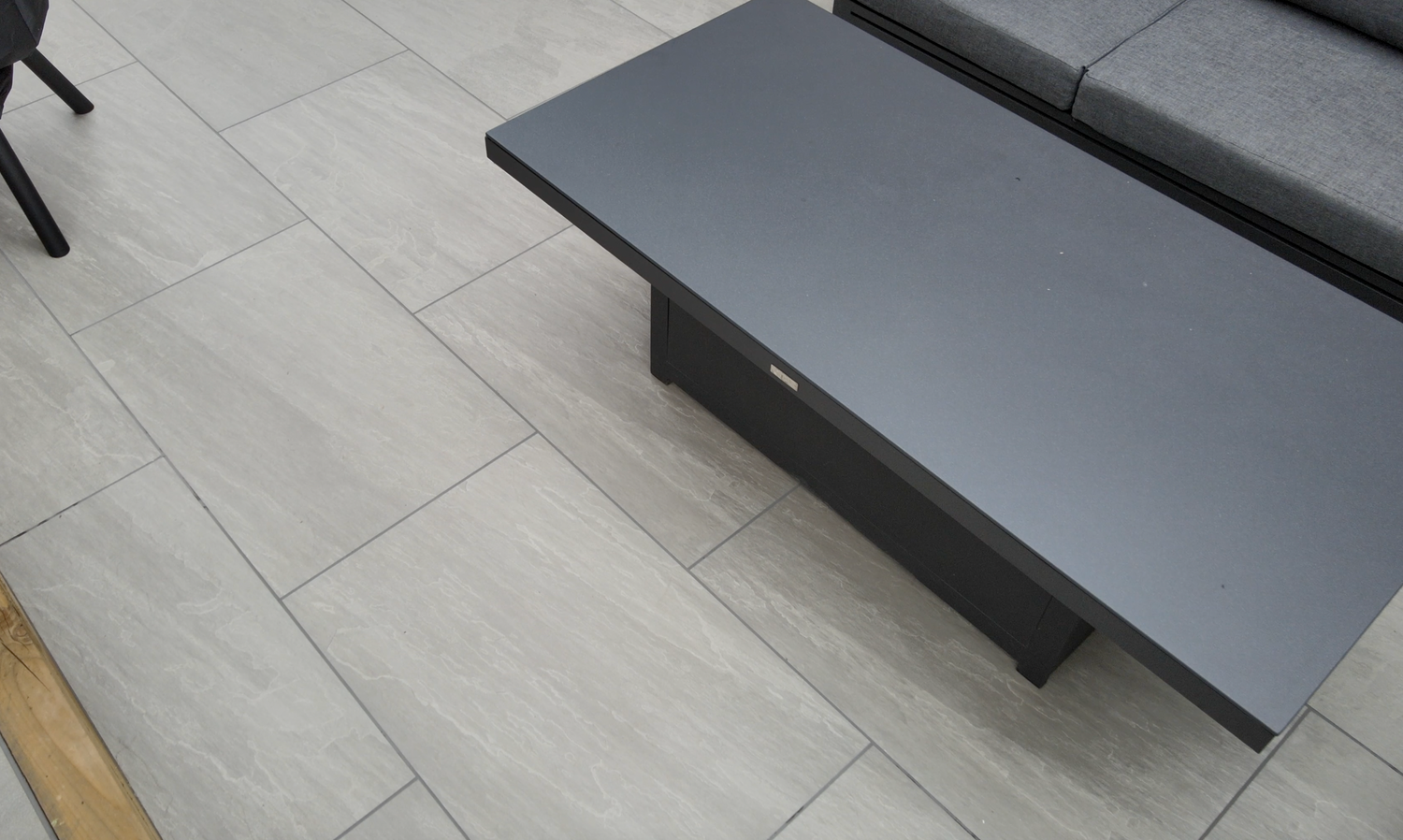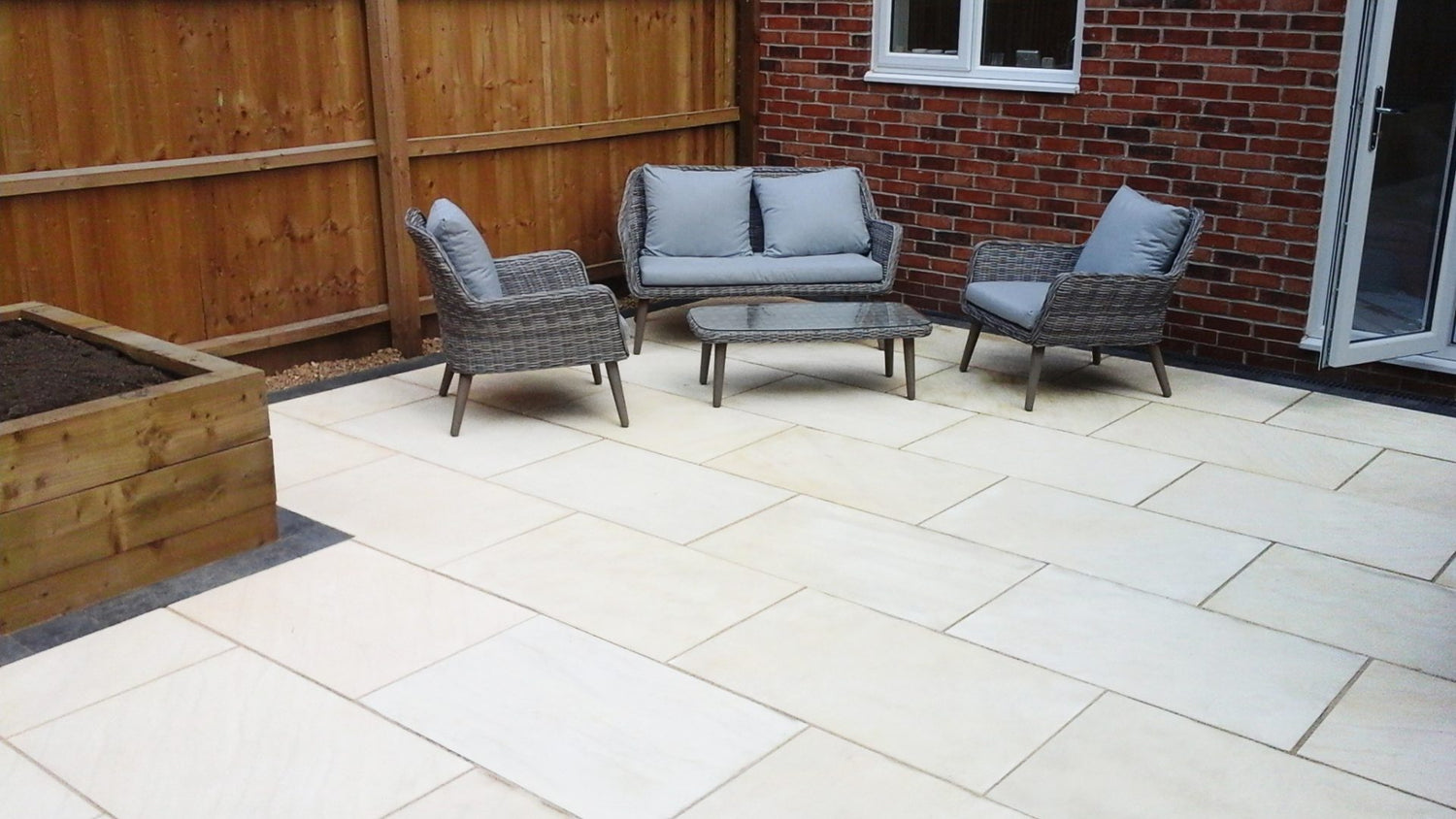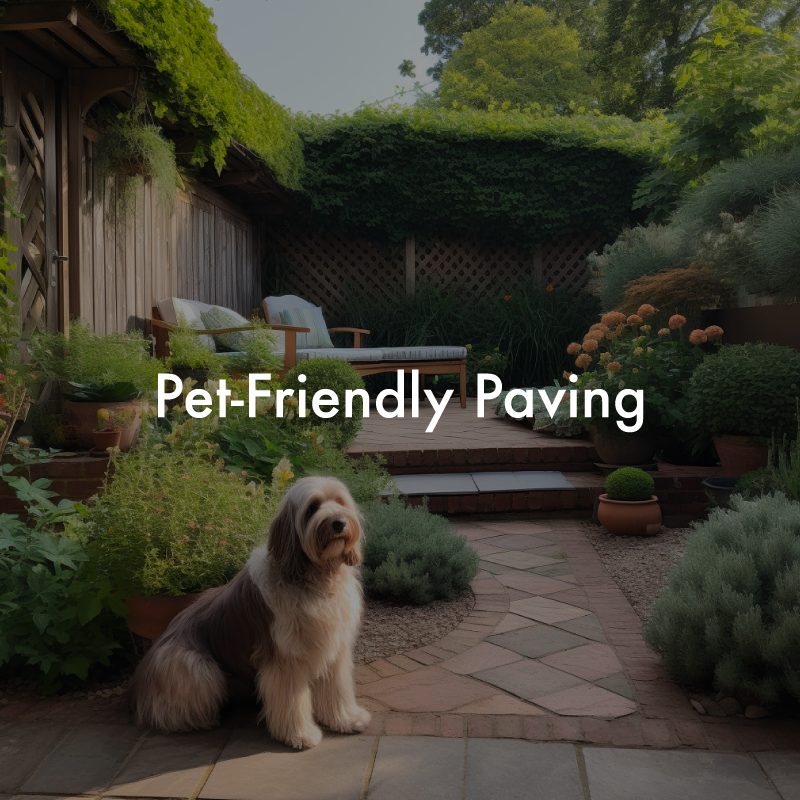
Pet Friendly Paving - What is the best paving for a dog-friendly garden?
Share
Creating a dog-friendly garden requires choosing the right paving materials to ensure your furry friends can enjoy the outdoor space as much as you do. In this guide, we will explore the best paving options for dogs and provide tips on selecting the perfect paving material for your pet-friendly garden.
Key Considerations for Dog-Friendly Paving
When choosing paving materials for a dog-friendly garden, consider the following factors:
- Durability and Resistance: Opt for paving materials that can withstand the wear and tear caused by your dog's claws and playtime.
- Non-Slip Surface: Dogs can be prone to slipping on wet surfaces, so choose a paving material with a non-slip finish to prevent accidents.
- Comfort: The texture and temperature of the paving material can affect your dog's comfort, especially during hot summer months. Consider materials for summer garden paving that stay cool in the sun and provide a comfortable surface for your pet.
- Maintenance and Cleaning: Dogs can bring dirt, mud, and other debris into your garden, so choose a paving material that's easy to clean and maintain.

Best Paving Materials for Dogs
With these factors in mind, let's explore some of the best paving materials for dogs:
Porcelain Paving
Porcelain paving is an excellent choice for dog-friendly gardens due to its durability, low porosity, and low maintenance requirements. It is resistant to scratches, stains, and moisture, making it ideal for withstanding the wear and tear caused by your pets. Additionally, porcelain paving offers various textures and finishes, including non-slip options, ensuring your dog can safely enjoy the outdoor space. Being pet friendly is just one of the many pros of porcelain paving.
Textured Sandstone Paving
Indian sandstone slabs are another popular option for dog-friendly gardens, particularly when choosing a textured finish. Textured sandstone provides a non-slip surface that is comfortable for your dog's paws and offers natural warmth during colder months. However, keep in mind that sandstone is a porous material, so regular sealing may be necessary to maintain its appearance and prevent stains.
Concrete Paving
Concrete paving is a budget-friendly option that offers durability and a non-slip surface for your dog-friendly garden. Concrete is available in various colours, textures, and finishes, allowing you to customize your outdoor space to suit your needs and preferences. However, it may require more frequent cleaning and maintenance compared to other paving materials.
Dealing with Dog Urine on Paving
One of the challenges of maintaining a dog-friendly garden is dealing with the effects of dog urine on your paving. Dog urine is slightly acidic, typically having a pH between 6.0 and 6.5, and contains nitrogen-rich compounds like urea. Over time, this can lead to discoloration and staining of some paving materials, particularly more porous options like sandstone. Porcelain, with its low porosity, is more resistant to these effects, making it an excellent choice if this is a concern.
To minimize potential damage, it's advisable to rinse the affected areas with water regularly to dilute the urine and prevent it from penetrating deep into the material. For more stubborn stains, a mild, pet-safe cleaner can be used. Regular maintenance is key to keeping your paving looking fresh and clean.
Paw-Friendly Paving Considerations
Your dog’s paws are sensitive, and extreme temperatures can cause discomfort or even injury. Paving materials like porcelain and concrete can become quite hot in direct sunlight, potentially causing burns or discomfort to your dog's paws. Conversely, in colder months, these surfaces can become quite chilly, which might be uncomfortable for your pet.
To mitigate these risks, consider providing shaded areas where your dog can rest during hot days, and avoid darker-colored paving materials that tend to absorb and retain heat. Always monitor your dog’s behavior—if they seem reluctant to walk on certain areas of the paving, it might be too hot or cold for their paws.
Additional Tips for a Dog-Friendly Garden
Beyond selecting the right paving material, consider the following tips to create a dog-friendly garden:
- Provide shaded areas for your dog to rest and stay cool during hot weather.
- Ensure there is a secure fence or barrier around the garden to prevent your dog from escaping.
- Choose pet-friendly plants and avoid toxic plants that can be harmful to your dog.
- Provide a designated area for your dog to use as a toilet, making it easier to clean up and maintain your garden.
In conclusion, creating a dog-friendly garden involves selecting paving materials that are durable, non-slip, comfortable, and easy to maintain. Porcelain paving, textured sandstone paving, and concrete paving are all excellent options for providing a safe and enjoyable outdoor space for your dog. Additionally, incorporating shaded areas, secure fencing, pet-friendly plants, and a designated toilet area will further enhance your garden's pet-friendliness. Visit Paving Shopper to explore our wide range of dog-friendly paving materials and receive expert advice on creating the perfect outdoor space for you and your furry friend. Happy paving!
Related Posts
-

UK Garden Statistics and Trends 2024
UK Garden Statistics and Trends 2024 General UK Garden Statistics The vast majority of UK households have access to ...
-

Can I lay Paving on Soil or Mud?
Technically, yes – you can lay paving stones or slabs directly onto exposed topsoil however, laying a sub-base will e...
-

How Much Does a New Patio Cost?
A new patio in the UK typically costs between £80-£150 per square meter. For a 40-50 sqm patio, expect to pay £2,000-...
-

What Different Sizes Do Paving Slabs Come In?
When planning a patio or outdoor paving project, one of the key decisions is choosing the right size paving slabs. ...
-

Can You Pressure Wash Indian Sandstone?
Indian sandstone is a popular choice for outdoor paving due to its durability and attractive appearance. However, li...
-

Is Sandstone Paving Permeable? Is it porous?
Sandstone's porous nature enables it to absorb rainfall, qualifying it as a permeable paving variety. However, seali...
-

Where Does Natural Sandstone Paving Come From?
Sandstone begins deep underground, formed over eras as minerals and sediments fused under pressure. Powerful forces ...
-

5 Paving Ideas for Small Gardens: Maximise Your Outdoor Space
Front of House When considering paving ideas for the front of your house, it's crucial to select ones that complem...
-

9 Paving Ideas for Front of House: Enhancing Curb Appeal with Style
The facade of a house plays a pivotal role in defining its character and curb appeal, and the choice of paving can s...
-

9 Summer Garden Paving Ideas UK
Summer gardens offer a vibrant canvas for homeowners to express their style while enhancing outdoor living spaces. G...
-

8 Garden Paving Ideas for 2024
It's time to refresh your garden's look for 2024 and an easy way to do that is with some new paving. With so many opt...
-

How to remove moss from patio paving
Moss growth is a common issue for patio paving, especially in damp, shaded areas. While moss may seem harmless, it ca...
-

How much does sandstone paving cost?
When choosing new garden pavers, sandstone offers homeowners an enticing middle-ground - more durable than basic conc...
-

Why Do Paving Slabs Crack And How To Repair Them
Seeing cracks appear on your patio or driveway can be disheartening after investing time and money into installing be...
-

How to lay paving in winter (Tips & Tricks)
How Cold Temperatures Impact Paving Projects The primary concern when working in cold weather is ensuring proper curi...
-

Sub Bases For Patios
Building the Perfect Patio Base: A Comprehensive Guide When planning an outdoor living space, understanding proper ba...
-

Pros and Cons of Porcelain Paving
Are you considering adding porcelain paving to your outdoor space? It's important to weigh the pros and cons before ...
-

Understanding Paving Slip Ratings: A Comprehensive Guide
A paving slip rating, also known as a slip resistance or anti-slip rating, is a measure of how slippery a surface...
-

Stunning Garden Water Feature Ideas - Enhance Your Outdoor Space
Garden water features are decorative elements that incorporate water into a garden, adding beauty and a sense of ...
-

How to Stop Weeds in Block Paving: Expert Tips andTricks
Weeds growing between the blocks of your paving can be an unsightly and frustrating problem. Not only do they make y...
-

How to clean paving without a pressure washer
A patio cleaner is a cleaning solution designed specifically for removing dirt, grime, and stains from outdoor patio...
-

How to Grout Paving Slabs – Expert Tips and Techniques
Pointing paving slabs is an important step in the process of installing them. Grout is a mixture of cement, water...
-

Block Paving Guide | What Does it Cost? | How Much Per m2?
Block paving is a versatile and durable option for creating driveways, patios, and paths. This method involves using...
-

Porcelain VS Ceramic Paving
Porcelain paving is non-porous and more durable than ceramic paving, which is more porous and prone to stains and wea...
-
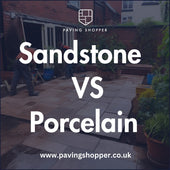
Sandstone V Porcelain Paving - (Style Comparison and Distinctions)
When choosing materials for your patio or driveway, two of the most popular options are sandstone paving slabs and p...
-

Understanding Gradients and Falls for Paving and Drainage (2024)
When it comes to paving and drainage projects, understanding the correct gradients and falls is essential for ensuri...
-
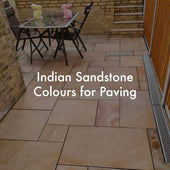
Indian Sandstone Paving Colours for A Patio - A Comprehensive Guide
Indian sandstone is one of the most popular paving materials, celebrated for its natural beauty and the variety of co...
-

Jointing and Pointing For Paving (Sand & Cement Mix)
Patio pointing is important for both looks and durability. It protects the layers under your paving, stops weeds, and...
-

How to Lay Paving on Sand and Cement: Expert Advice and Tips
Paving on Sand and Cement: A Comprehensive Guide When it comes to enhancing your outdoor space, paving is a popular ...
-

Pros and Cons of Sandstone Paving
Pros & Cons of Indian Sandstone Paving Indian sandstone paving is a natural and durable option that adds both bea...
-
Does Patio Paving Need Edging? A Comprehensive Guide
In this article, we'll explore the importance of patio edging, the different types of edging materials available, and...
-

Patio Paving Laying Patterns Guide
Paving patterns can transform an ordinary outdoor space into a stunning and eye-catching area that complements your ...
-

Patio Kits vs Single Size Paving Slabs: Which To Choose?
When designing a patio or outdoor space, one crucial decision is whether to use a patio kit (also known as patio pack...
-

Are paving slabs suitable for driveways?
This is a question many homeowners ask when it comes to choosing the right type of driveway surface for their home. T...
-

How much paving do you need to cover your outdoor space?
Planning an outdoor paving project is exciting, but it’s crucial to accurately estimate the amount of paving needed b...
-

What is the Best Paving for Patios?
When it comes to choosing the best paving for patios, there are a variety of factors to consider, such as durability,...
-
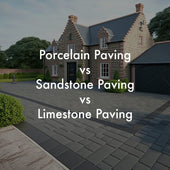
Sandstone v Limestone v Porcelain: The Pros and Cons of Different Garden Paving Materials
Transforming your outdoor space involves choosing the right paving material, and porcelain and sandstone are two of t...
-
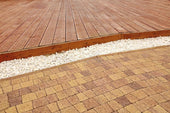
Are Paving Slabs Cheaper Than Decking?
Transforming your backyard into the ultimate outdoor oasis can be challenging when choosing between paving slabs or d...
-

How to lay a patio - An expert guide to laying paving slabs and patterns
There are a few things to consider before laying a patio, such as the type of paving stones and the laying pattern. Y...
-
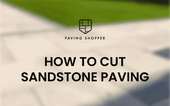
How to cut Sandstone Paving?
When it comes to prepping your garden for a new patio, you may consider different designs that require your paving to...









































